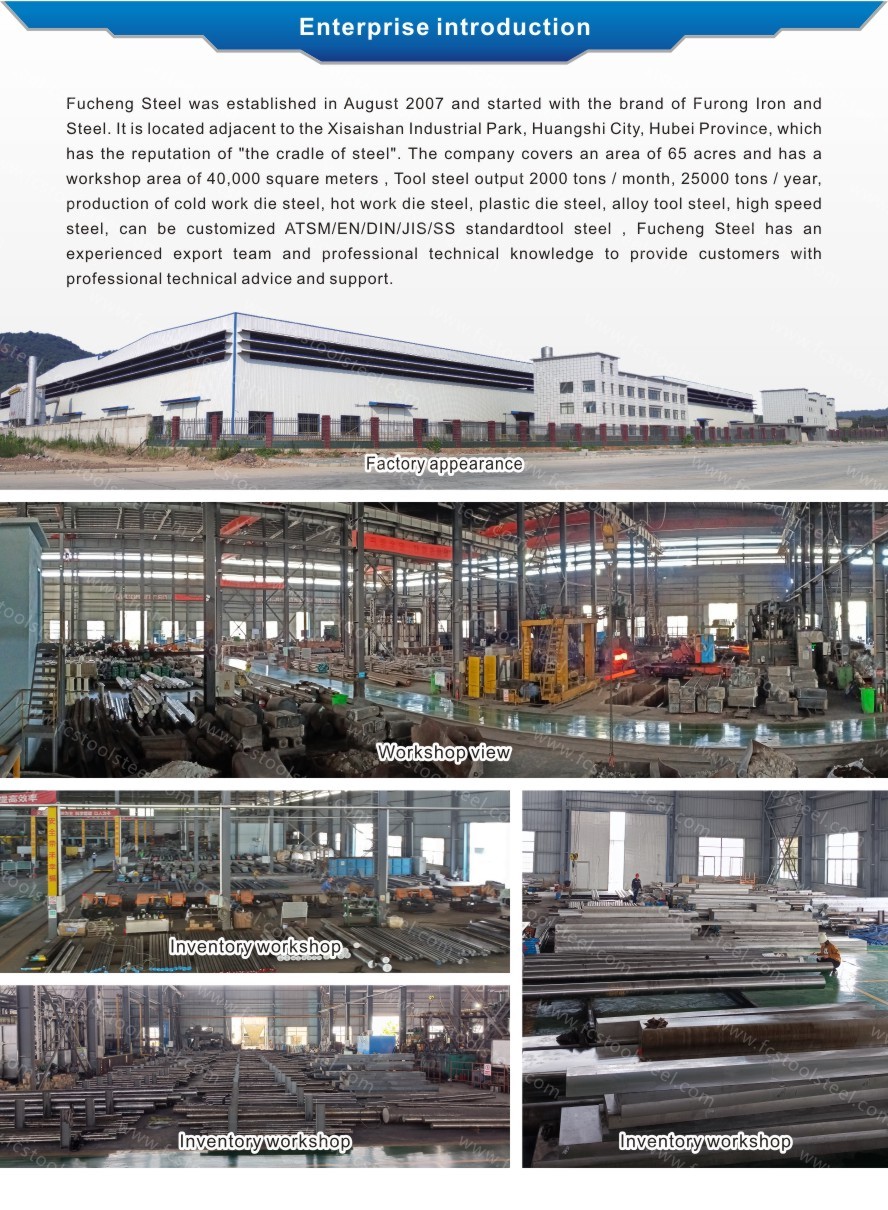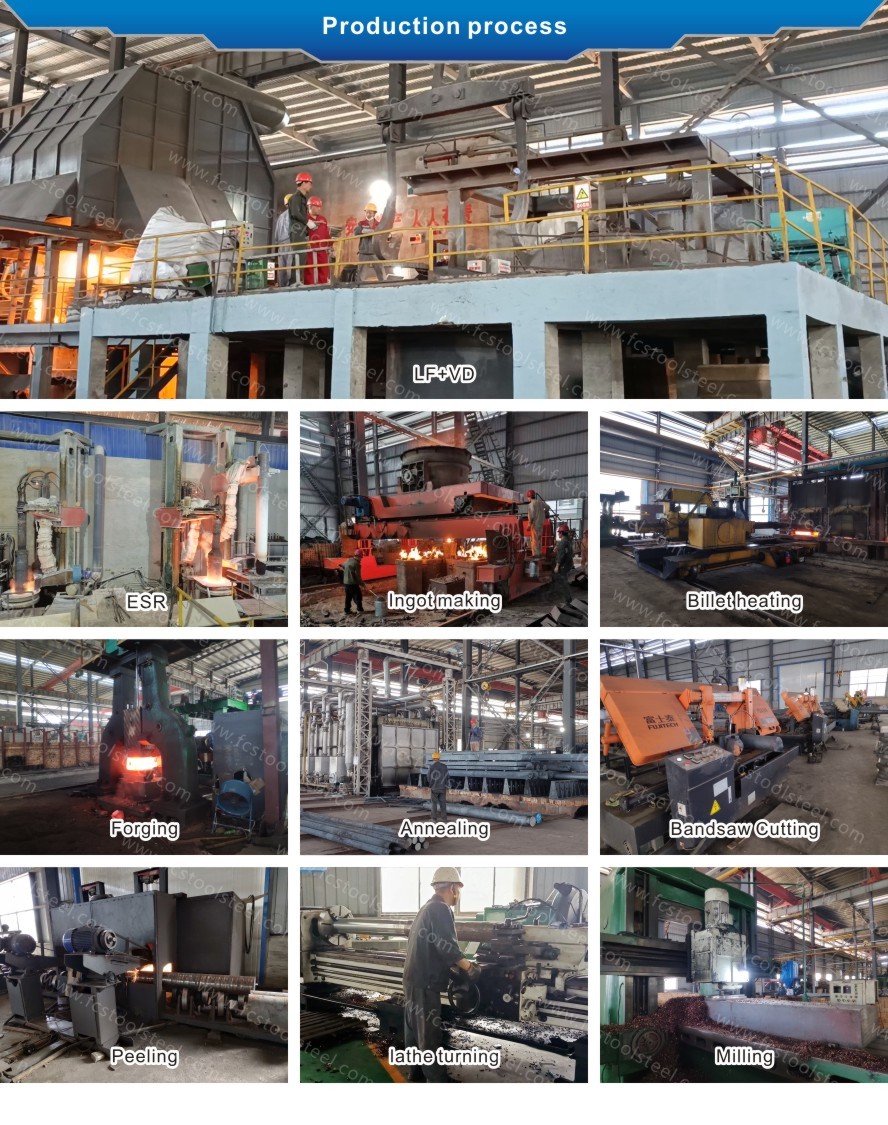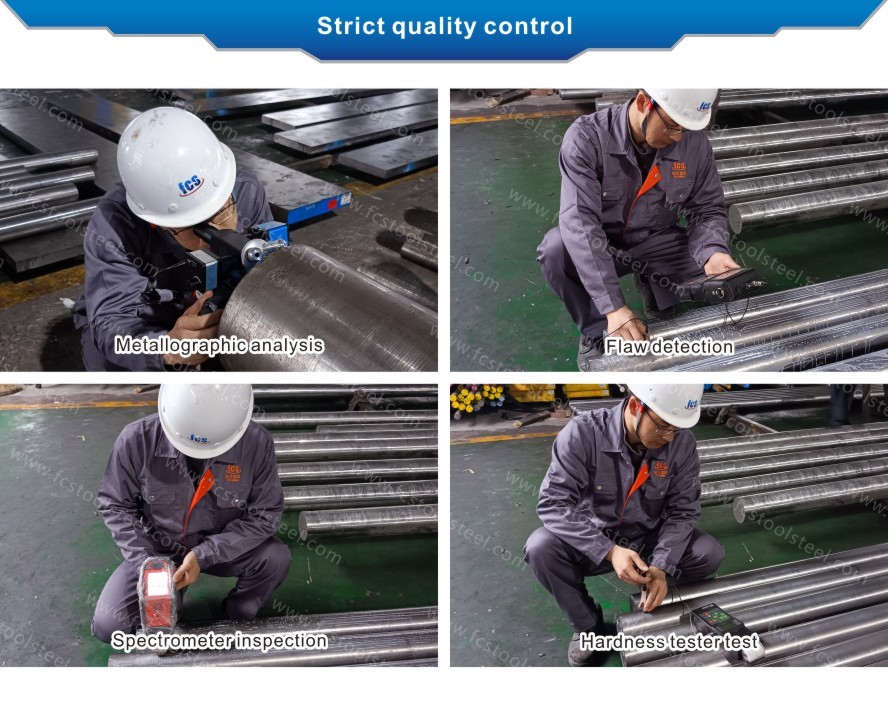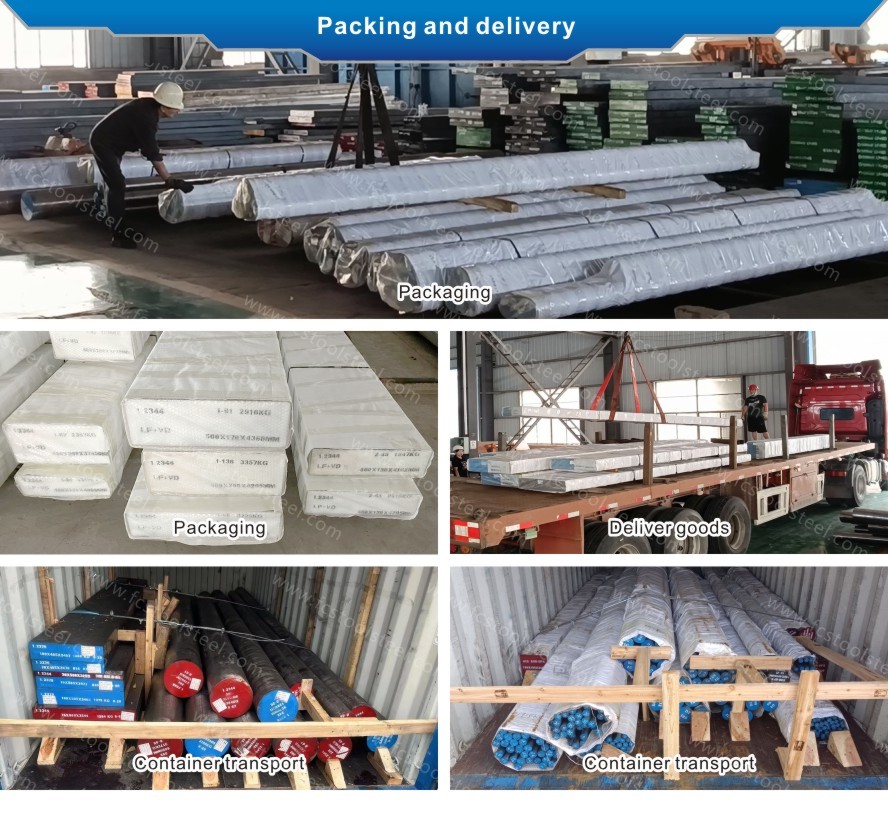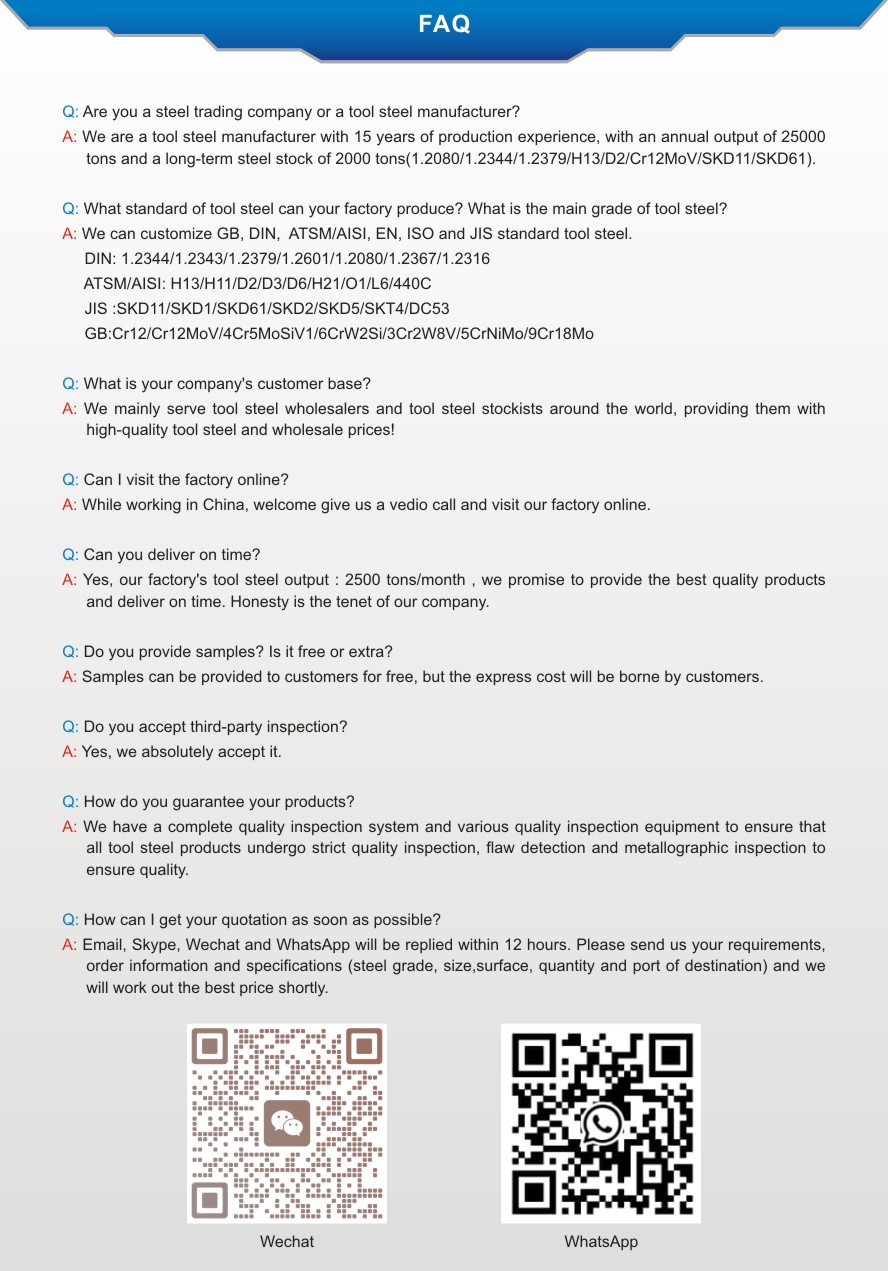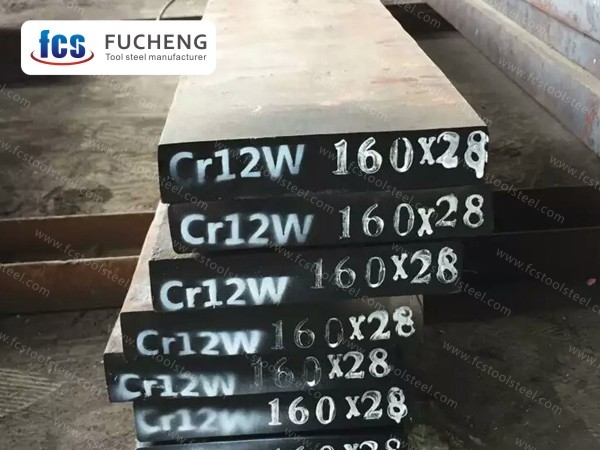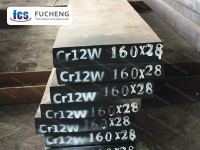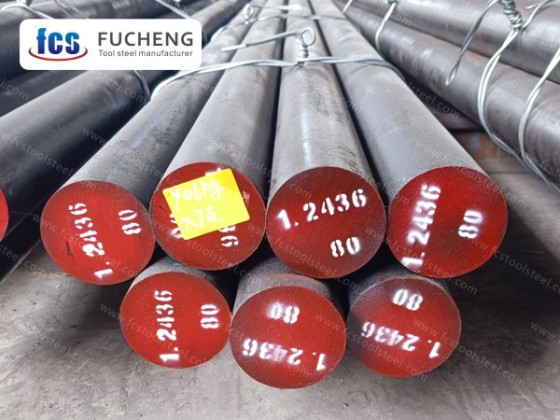
- Home
- >
- Products
- >
- Cr12W Tool Steel
- >
Cr12W Tool Steel
The highlight of Cr12W steel as a high-end cold work die steel lies in its excellent wear resistance (62-64HRC) and perfect balance of toughness. Cr12W steel significantly improves its red hardness by adding 1% tungsten element, ensuring stable performance of the die at 300 ℃; The optimized carbide distribution of Cr12W steel gives it three times the service life of ordinary mold steel, making it particularly suitable for precision electronic component stamping and automotive part forming.
- fucheng steel
- China
- 1 Month
- 2000 Tons/Month
- Information
- Video
Cr12W STEEL
| Smelting and Manufacture Method: | LF+VD+Forged |
| Delivery Condition: | Annealed |
| Delivery hardness: | ≤255 HBS |
| UT Test Standard: | Sep 1921-84 Class3 D/d,E/e |
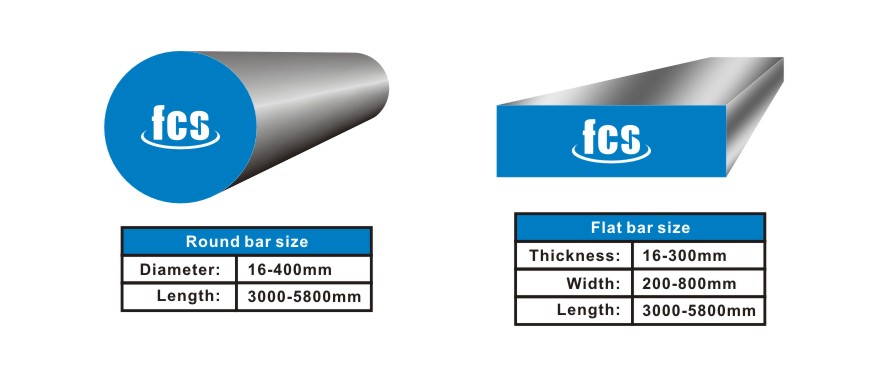
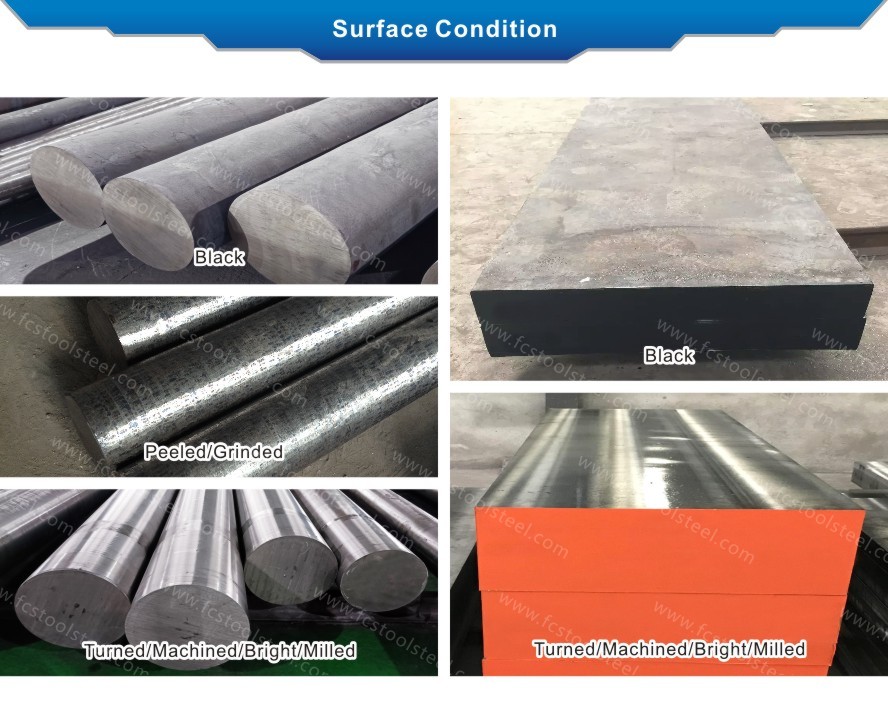
Cr12W STEEL GRADE COMPARISON AND CHEMICAL COMPOSITION COMPARISON
| Standard/Steel Grade | Chemical Composition(%) | |||||
| C | Si | Mn | Cr | W | ||
| GB | Cr12W | 2.00~2.30 | 0.10~0.40 | 0.30~0.6 | 11.00~13.00 | 0.60~0.80 |
| ASTM | D6 | 2.00~2.20 | 0.35~0.50 | 0.20~0.40 | 11.50~12.50 | 0.60~0.90 |
| DIN/W-Nr. | X210CrW12/1.2436 | 2.00~2.25 | 0.10~0.40 | 0.15~0.45 | 11.00~12.00 | 0.60~0.80 |
| JIS | SKD2 | 2.00~2.30 | 0.10~0.40 | 0.30~0.60 | 11.00~13.00 | 0.60~0.80 |
APPLICATION
Cr12W steel is mainly used to manufacture high wear-resistant and high-precision cold work molds, especially suitable for working conditions such as punching molds, stretching molds, and embossing molds that require high-strength impact and wear resistance.
The excellent wear resistance and hardenability of Cr12W steel make it outstanding in fields such as precision electronic component stamping and automotive component forming, effectively extending the service life of molds and maintaining machining accuracy.
Cr12W STEEL CHARACTERISTICS
Cr12W steel is a high carbon and high chromium cold work die steel that occupies an important position in the industrial field due to its excellent wear resistance and hardenability. Cr12W steel has become an ideal choice for precision mold manufacturing by maintaining high hardness and good toughness performance through reasonable alloy ratios.
Cr12W steel has significant secondary hardening characteristics and can form a uniformly distributed carbide network after appropriate heat treatment. The microstructure of Cr12W steel endows the material with excellent wear resistance, making it particularly suitable for long-term high load stamping environments.
In terms of heat treatment process, Cr12W usually adopts a quenching temperature of 980-1030 ℃ combined with medium temperature tempering, which can achieve a surface hardness of 62-64HRC. The unique tempering stability of Cr12W enables the mold to maintain stable performance even in a working environment of 300 ℃.
Compared to ordinary Cr12 series steel, Cr12W significantly improves its red hardness and high-temperature strength due to the addition of about 1% tungsten element. This enables Cr12W steel to effectively resist thermal softening during high-speed continuous stamping, extending the service life of the mold.
In terms of processing performance, Cr12W has good machinability in the annealed state, and the hardness is controlled within the range of 220-240HB. The forging temperature range for Cr12W steel is 850-1150 ℃, but it is important to strictly control the final forging temperature to avoid grain coarsening.
In the field of precision mold applications, Cr12W is particularly suitable for manufacturing progressive dies and multi station stamping dies that require a dimensional tolerance of ≤ 0.01mm. The micro deformation characteristics of Cr12W steel enable the mold to maintain over 90% of its original accuracy after 5 million stamping cycles.
Cr12W steel performs outstandingly in the forming of precision parts such as electronic connectors and automotive seat belt buckles. Actual cases have shown that the lifespan of IC lead frame molds made of Cr12W can reach 8-10 times that of ordinary mold steel.
The precautions for using Cr12W steel include: avoiding long-term work in environments above 400 ℃ to prevent carbide accumulation; Cr12W steel needs to undergo stress relief tempering after electrical processing; It is recommended to perform preventive polishing maintenance every 100000 strokes.
